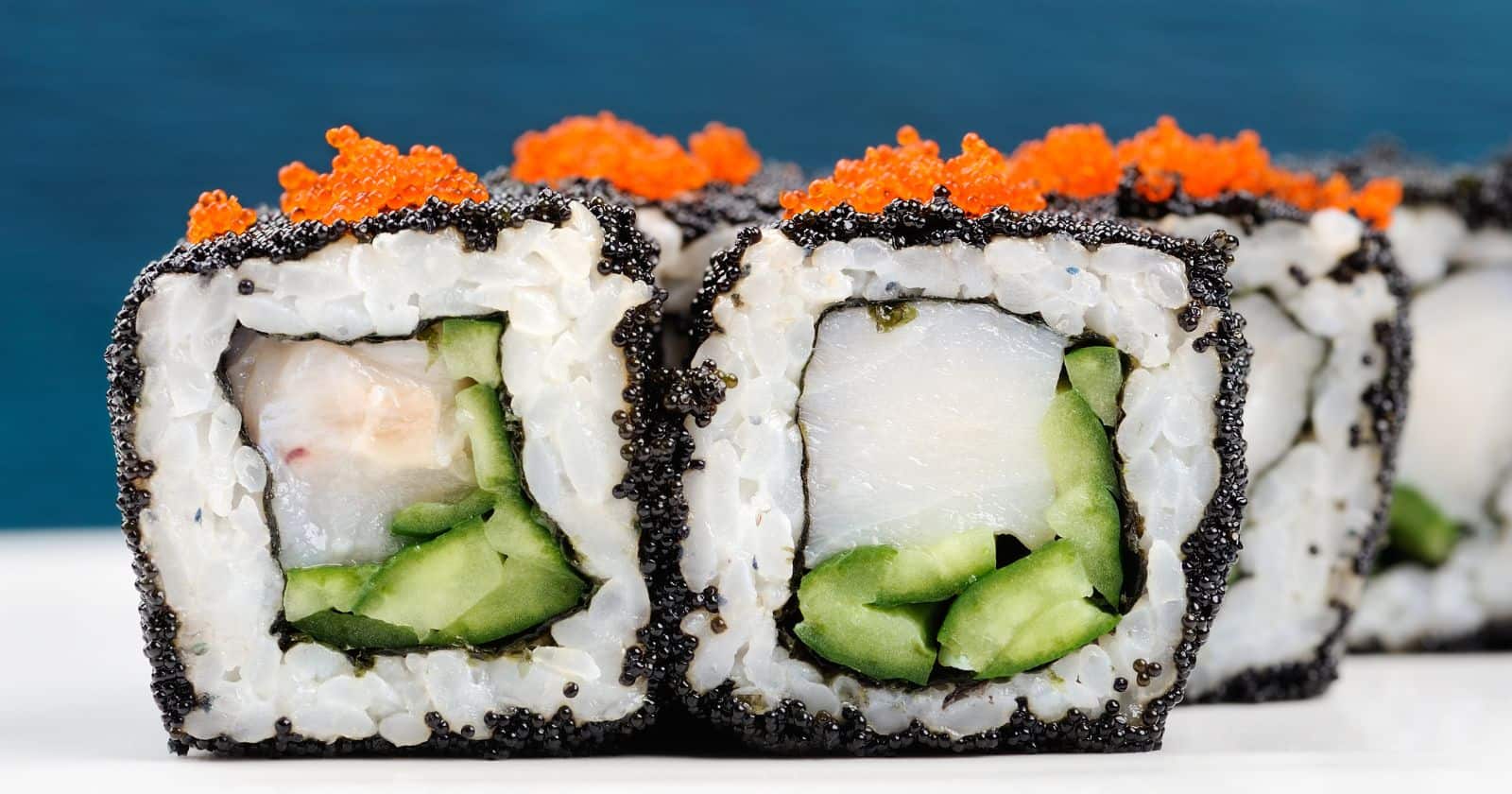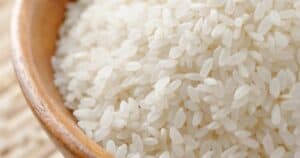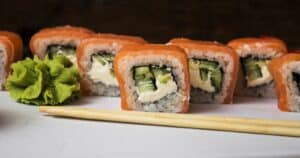Is sushi veg or non-veg? This classic Japanese dish often leaves eaters wondering.
Sushi can go either way. The varieties are endless, with veggie rolls bursting with flavor alongside fish-topped morsels. Sushi can be healthy, providing protein, antioxidants, and omega-3s. Yet it also contains raw seafood, which some avoid.
The key is knowing your options. Vegetarian sushi stars ingredients like avocado, cucumber, and tamago (cooked egg). Skip the raw fish and enjoy clever combos like umeboshi plums or shiitake mushrooms. Carnivores get their fix from tuna, salmon, yellowtail and more. Just pick your favorite rolls and pieces.
With mindful choices, sushi can suit any diet. Keep reading to learn more about veg and non-veg sushi varieties. Discover how to enjoy this Japanese staple, no matter your preferences.
Sushi Origins: A Surprising Vegetarian History
Sushi wasn’t always so fishy. The original style known as narezushi dates back to 4th century Japan. People pressed salted fish between layers of fermented rice for months of curing. The rice threw off lactic acid, pickling the fish safely.
Centuries later, Tokyo street stalls started selling hand-pressed sushi for bustling crowds. Vendors shaped rice and fish by hand, minus the fermentation. This faster method gave birth to edomae sushi in the early 1800s.
Here’s the shocker: Old Tokyo sushi was vegetarian. Street chefs substituted fish with fried tofu pockets, pickled veggies, mushrooms or egg custard. These inventive rolls proved popular with Buddhist monks and temple visitors.
So how did sushi go from temple treats to raw seafood? The answer involves one clever chef named Hanaya Yohei. In the 1820s, he invented nigiri sushi to serve at his stall. These finger-shaped mounds layered sliced fish or shellfish atop vinegar-seasoned rice. Nigiri sushi became an instant hit.
Japan’s 19th century modernization brought refrigeration and fish markets to cities. No longer relying on pickle-preserving, chefs embraced fresh fish for nigiri sushi and creative rolls. The modern style was born.
Yet veggies still shared the spotlight. Seasonal vegetables starred in their own sushi varieties. Traditional rolls like umejiso and nattō maki married regional flavors with rice and nori. Sushi menus offered plenty of plant-based options well into the 20th century.
So the debate rages on. Is sushi plant or animal? Let’s look at what’s swimming beneath the surface.
Sushi Ingredients: The Fish and Veggies Under the Seaweed
Sushi ingredients range from raw seafood to vegetarian delights:
Fish and Seafood
- Tuna (maguro): red, meaty and rich in flavor
- Salmon (sake): orange, buttery and omega-3 rich
- Yellowtail (hamachi): mild, lean and clean-tasting
- Mackerel (saba): bold, fatty and umami-flavored
- Eel (unagi): savory, grilled and basted in sweet sauce
- Shrimp (ebi): sweet, tender and served cooked or raw
- Squid (ika): chewy, mild and often roasted or fried
- Surf clam (hokkigai): subtly briny and served halved
- Octopus (tako): chewy, low fat and lightly marinated
- Sea urchin (uni): creamy, oceany and served in lobes
Vegetables and More
- Avocado: creamy, nutty and rich in healthy fats
- Cucumber: cool, crisp and refreshing
- Carrots: sweet, crunchy when julienned or tempura fried
- Radish sprouts: peppery, crunchy and colorful garnish
- Asparagus: earthy, roasted or blanched into tender-crisp spears
- Shiitake mushrooms: umami, meaty texture when grilled
- Sweet potato: starchy, substantial and nutritious when tempura fried
- Tamagoyaki (Japanese omelet): sweet-savory, rolled and sliced into strips
- Natto: sticky fermented soybeans with strong ammonia aroma
- Umeboshi (pickled plum): tangy, bright and umami
This parade of proteins and vegetables can be mixed, matched or separated into 100% veg or non-veg sushi. You choose your ingredients by customizing rolls or selecting pieces off the sushi bar.
Key Benefits: Why Sushi Ticks Off Health Boxes
Beyond sheer variety, sushi offers noteworthy nutrition. At its core are vitamins, minerals and macronutrients from sea and land:
Lean Protein
Fish and seafood offer high-quality proteins with less fat and cholesterol than red meat. Soy-based nigiri, natto and edamame provide plant-based protein as well.
Omega-3 Fatty Acids
Heart-healthy omega-3s abound in salmon, tuna, mackerel and shellfish. These essential fatty acids lower inflammation and triglycerides.
Antioxidants
Colorful sea veggies like nori contain carotenoids. Orange hued fish pack vitamin A. Wasabi offers antimicrobial benefits. It’s an antioxidant bonanza in one spicy bite.
Fiber
Vegetables wrapped inside sushi or pickled for nigiri boost fiber intake. This fills you up, aids digestion and stabilizes blood sugar.
Vitamins and Minerals
From vitamin C in umeboshi to magnesium in shiitakes, sushi offers hard-to-find nutrients. Seaweed-wrapped rolls provide iodine, packed with thyroid and metabolic benefits.
Balance is key. Sushi becomes less healthy when dipped in fatty sauces or mayo-based spicy sauce. Watch portion sizes as well. Yet when mindfully savored, sushi checks many nutritional boxes.
How To Order Vegetarian and Vegan Sushi
Plant-based eaters can design their dream sushi rolls. Start with veggie-centric favorites like:
- Avocado – This nutty, buttery fruit stars on its own or pairs perfectly with cucumbers and carrots.
- Cucumber shiso – Cool cucumber meets refreshing shiso leaves in this crisp combo.
- Oshinko (pickled radish) – Tart and crunchy, oshinko refresh classic veggie rolls.
- Natto – You either love or hate this sticky fermented soybean. Natto fans enjoy its strong flavor atop rice.
- Shiitake nigiri – Grilled mushroom offers satisfying umami and texture.
- Asparagus temaki – Blanched or grilled asparagus gets wrapped in nori cones.
- Tamagoyaki – Sweet Japanese omelet, often made with dashi stock, makes a protein-rich nigiri option.
Request no fish sauce in tamagoyaki and other rolls to keep them 100% vegan. Beyond rolls, load up on sides like edamame, seaweed salad and miso soup.
How To Order Non-Veg Sushi
For fish and shellfish lovers, the options delight. Try nigiri or sashimi to enjoy ultra-fresh cuts:
- Maguro (tuna) – Melt-in-your-mouth tuna ranks top for sushi connoisseurs. Opt for fatty bluefin or budget-friendly yellowfin.
- Sake (salmon) – Buttery, rich salmon offers an omega-3 boost. Go for wild-caught when possible.
- Ebi (shrimp) – Sweet shrimp shine cooked or raw. Prawn nigiri makes a tender treat.
- Uni (sea urchin) – An acquired taste, sea urchin roe exudes briny creaminess.
- Ikura (salmon roe) – Bursting salmon eggs atop rice create a salty-rich pop.
- Ankimo (monkfish liver) – Rare and velvety, monkfish liver is a subtle oceanic experience.
Beyond nigiri, customize rolls with favorite fish or seafood inside. Add fresh sashimi plates on the side to balance flavors.
How To Balance Taste, Health and Budget
On a budget? Fill up with affordable veggie rolls and sides. Seek weekday lunch specials offering miso soup, rice and rollback sushi.
Aiming for nutrition? Emphasize salmon, tuna, mackerel or yellowtail along with veggie sides. Limit fried or mayo-drenched options.
Want a luxe experience? Order omakase or chef’s choice. This multicourse meal showcases the day’s best and most exotic offerings. It carries a higher price tag but offers memorable bites.
No matter your goals, sushi offers flexibility. You can design rolls or pick pieces to match health needs, taste preferences and budget.
Sushi Can Suit Any Diet or Craving
Like a choose-your-own-adventure story, sushi bends to your will. Loaded with veggies or brimming with fish, it provides options for vegans to pescatarians. You craft each bite to match your cravings or dietary approach.
Sushi remains a shape shifter by design. This classic street food was made for customization. So don’t get caught up in rules. Instead have fun with endless flavor combos tied up with seaweed.
The Verdict: Sushi Can Be Veg, Non-Veg or Both
Sushi takes the middle ground. At its very core, this Japanese favorite can be 100% plant based or fish focused. Available ingredients make both options possible.
Rather than dividing into rigid camps, keep an open mind. Savor sushi’s flexibility. Explore new vegetable rolls alongside fresh-cut nigiri.
With mindful choices, sushi becomes a moveable feast. Let taste and nutrition guide you. The possibilities delighted Buddhist monks centuries ago. And they continue inspiring sushi lovers today.
So next time the veg vs. non-veg sushi debate flares up, point to the peaceful co-existence. There’s room at the sushi bar for all diets. Just grab a pair of disposable chopsticks and enjoy this edible art form, no matter what’s wrapped inside.





